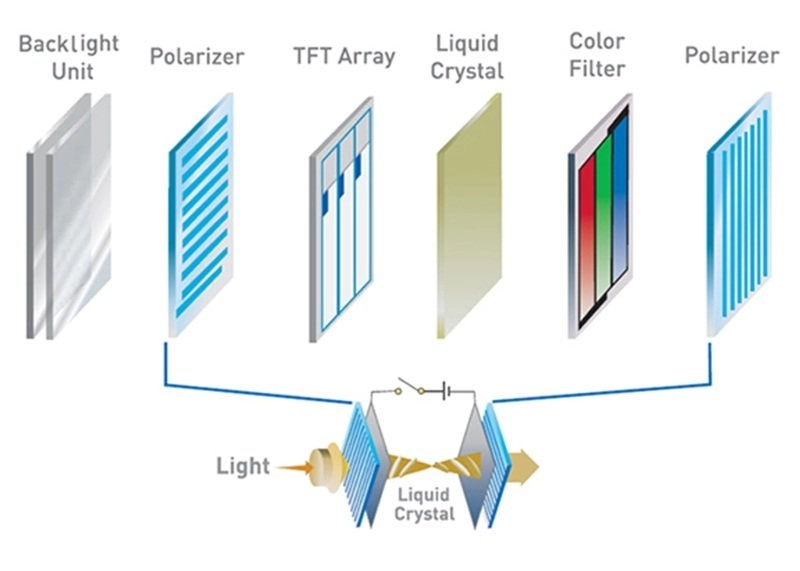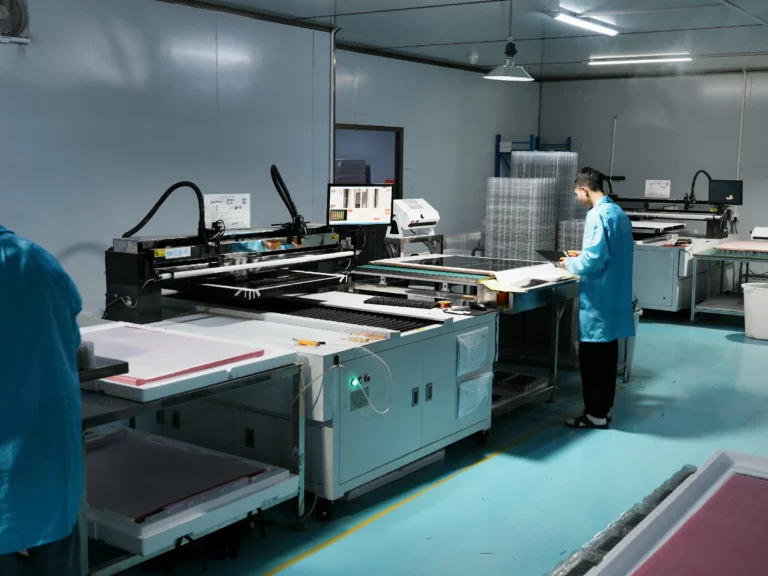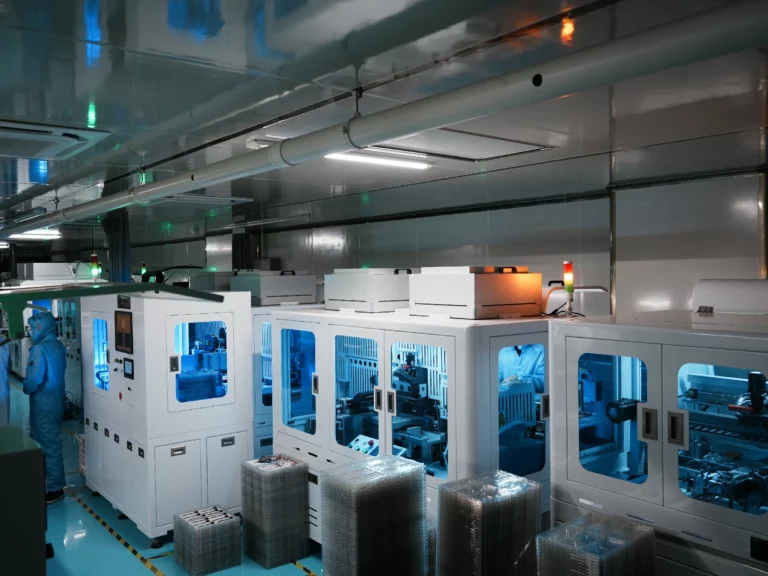- 1 What Is an LCD Module?
- 2 What Makes Up the Cost of an LCD Module?
- 3 Why Cheap Doesn’t Mean Poor Quality
- 4 Thousands of products are available in our catalog.
- 5 Does Cheap Mean Low Quality?
- 6 Advantages of Cheap LCD Modules
- 7 Best Use Cases for Cheap LCD Modules
- 8 Are They Certified?
- 9 Key Considerations When Choosing
- 10 How Do They Compare to High-End Modules?
- 11 Market Trends: Cheap LCD Modules Are Getting Smarter
- 12 Future-Proof Your Project with RJY’s Display Expertise
- 13 FAQs
What Is an LCD Module?
An LCD module is an integrated display unit that usually includes a TFT panel, backlight system, driver circuit, FPC (flex cable), and possibly a touch panel and mounting structure. It’s widely used across various end products—from consumer electronics and smart home devices to industrial terminals and education tools.
In simple terms, the module receives data from a host controller, processes the signal via an IC, and translates that into visible images through the LCD.
What Makes Up the Cost of an LCD Module?
The total cost of an LCD module typically includes:
- TFT panel (30–40%)
- LED backlight assembly
- Driver ICs and touch controllers
- FPC/PCB wiring
- Mechanical parts (lens, brackets)
- Labor (assembly, testing, aging)
Cost varies based on component quality, integration complexity, scale, and supply chain efficiency.

👉 Relacionado: A Complete Breakdown of Key Components in Modern Displays
Why Cheap Doesn’t Mean Poor Quality
“Cheap” reflects smart sourcing, not inferior builds. These modules rely on:
- Mature supply chains using mass-produced, standard-sized panels
- Simplified designs with fewer features (no touch, fixed interfaces, etc.)
- Proven IC platforms that don’t require customization
- Bulk manufacturing to lower unit costs
- Localized sourcing to avoid import duties and reduce logistics costs
A reputable supplier delivers clear visuals, basic function, and certification (CE, RoHS), in line with industrial specs.
Milhares de produtos estão disponíveis no nosso catálogo.
Descubra a nossa vasta gama de produtos, incluindo LCD-TFTs, ecrãs gráficos e alfanuméricos OLED, LCMs, ecrãs de papel eletrónico, leitores de códigos de barras (incorporados, portáteis, de montagem fixa), monitores industriais, computadores industriais (placas de suporte, COMs e SOMs, sistemas incorporados, computadores de painel HMI, SBCs), ecrãs tácteis capacitivos e resistivos e acessórios (kits de desenvolvimento, conectores, controladores, fitas FPC/FFC, conectores ZIF).
Does Cheap Mean Low Quality?
Absolutely not. It’s important to separate “cheap” from “poor quality.”
A well-made cheap LCD display is often based on mature technology and designed to “do the job well enough.” It doesn’t aim for luxury but delivers solid, stable performance within the required specifications.
Here’s what to look for:
- Stable and clear image display
- Industry-standard interface and compatibility
- Certifications like CE, EMC, or RoHS
- Real-life case studies or production history
Advantages of Cheap LCD Modules
- Lower Cost = Higher Profit Margin
Perfect for large-scale projects where display is functional but not the selling point. - Faster Lead Times, Steady Supply
Ready-to-ship stock and standardized models mean no long waiting periods. - Personalização flexível
Options for FPC direction, brightness level, mounting frame, and more—at a lower MOQ.
Best Use Cases for Cheap LCD Modules
- Smart Home Appliances (ACs, washing machines)
- Entry-level Education Tablets
- Industrial Control Panels and HMI devices
- Public Terminal Displays in parcel lockers and transit kiosks
- Non-critical Medical Monitors
Are They Certified?
Most cheap lcd display products from reputable suppliers pass basic certifications like:
- CE for European safety compliance
- FCC for US electromagnetic regulations
- RoHS for environmental protection
- Aging and temperature tests for operational stability
So yes—they can be reliable even in regulated markets.
Key Considerations When Choosing
- Brilho – Is it suitable for indoor or semi-outdoor use (typically ≥250 nits)?
- Resolução – Does it meet your UI requirements (e.g. 320×240, 800×480)?
- Ângulo de visão – Will the user see the content clearly from all angles?
- Interface Compatibility – SPI, MCU, RGB, MIPI… does it match your board?
- Lifespan – Is the LED backlight rated for 20,000+ hours?
How Do They Compare to High-End Modules?
| Aspeto | Cheap LCD Display | High-End LCD Module |
|---|---|---|
| Custo | Very affordable | Significantly more expensive |
| Display Quality | Good enough for basic use | Superior clarity, contrast, and color |
| Funcionalidade | Basic features and single interface | Rich interfaces, touch, anti-glare |
| Aplicação | Consumer & light industrial use | Automotive, medical, premium devices |
Market Trends: Cheap LCD Modules Are Getting Smarter
Cheap doesn’t mean stagnant. Many budget displays are now catching up with:
- Higher resolutions (e.g., 1024×600)
- Embedded touch solutions
- Slimmer mechanical designs
- More reliable QC and bonded panels for durability
- IoT-ready combinations with MCU integration
Future-Proof Your Project with RJY’s Display Expertise
Escolher um cheap lcd display isn’t about cutting corners—it’s about smart engineering, optimized supply chains, and matching performance to actual needs.
In markets where price matters and functionality is fixed, these displays offer unbeatable value. When selected from reputable suppliers, they deliver stability, reliability, and customization—all at a fraction of the cost.
Sometimes, “cheap” is just the smarter choice.
Even our budget-friendly LCD modules support:
- High-efficiency LED backlighting
- Integrated capacitive touch (optional)
- Optical bonding (custom request)
- Long lifespan components (≥20,000 hrs)
- Smart home / IoT-ready interfaces
We don’t just ship displays—we co-engineer product display systems with our clients, ensuring every detail supports their success.
👉 Relacionado: Como identificar se o seu fornecedor de módulos LCD é um verdadeiro fabricante
FAQs
1. How long can a cheap LCD module last?
Most LED backlights last 20,000+ hours. With proper use, you can expect 3–5 years.
2. Can cheap displays be used outdoors?
Only if brightness exceeds 500 nits and the unit has protective coatings.
3. Are custom FPC or front glass options available?
Yes, many suppliers offer basic customization for volume orders.
4. Will color or clarity be noticeably worse?
In most cases, no. The difference is minimal for general-purpose devices.
5. Are certifications like CE or RoHS included?
Yes, often available upon request from qualified vendors.
6. Is there a minimum order quantity (MOQ)?
Some models support MOQs as low as 100–300 pcs.




